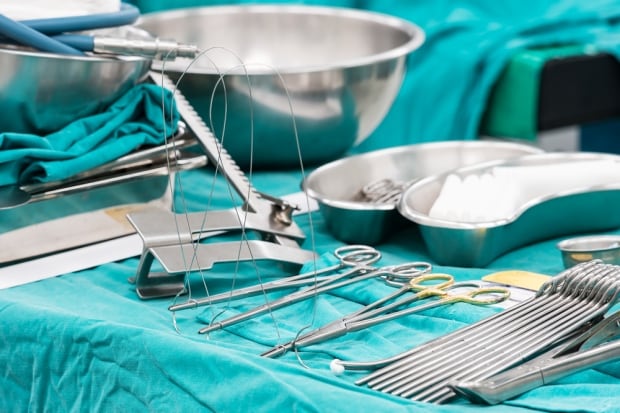Tainted heart surgery devices linked to factory

Hospitals have sent open-heart surgery patients notice about the small risk of bacterial infection associated with heater-cooler units used during operations worldwide. (Shutterstock )
Open-heart surgery patients in Canada and around the world were infected with bacteria from medical devices. Now scientists have traced the likely source of contamination to a factory where the devices were made.
In May, Alberta Health Services announced an adult who had open-surgery became infected with bacteria. The rare case was one of more than 100 since 2013 of potentially fatal infections with Mycobacterium chimaera.
The bacteria are commonly found in soil and water and do not cause problems in most healthy people. In patients in a weakened state after surgery, symptoms such as night sweats, muscle aches, weight loss, fatigue, or unexplained fever can develop, sometimes months later.
The bacteria can lead to prosthetic valve endocarditis or infection of the inner lining of the heart.
- Heart surgery infection linked to contaminated machines
- Medical devices used in open heart surgery could pose infection risk
Last year, Health Canada announced LivaNova, the manufacturer of the Heater Cooler System 3T, recalled lots of its devices.
The devices are commonly used in Canada, the U.S., Europe and Australia to heat and cool blood during cardiac procedures.
Source of infection?
Despite investigations by the U.S. Centers for Disease Control and Prevention and the European Centre for Disease Prevention and Control, there was no firm evidence linking the global outbreak to a source, either at a factory or local hospitals.
Now researchers say factory contamination seems a likely source, based on their analysis of DNA from 250 samples of bacteria collected from patients in Switzerland, Germany, the Netherlands and the U.K.
They also tested samples from hospitals using various types of heater-cooler units, as well as other medical devices, tap and drinking water at hospitals.
London-based Liva Nova and Rastatt, Germany-based Manquet both provided samples from their production lines.
The study’s authors said their whole-genome analysis showed a high degree of similarity in samples from patients, LivaNova heater-cooler units used in hospitals and the company’s production site.
“It is probable that LivaNova [heater-cooler units] represent the common source of infection and that contamination of most of these [units] occurred during production at this production site,” Dr. Hugo Sax of University Hospital Zurich in Switzerland and his co-authors said in this week’s online issue of the Lancet Infectious Diseases journal.
At least one patient might have been infected from a locally contaminated heater-cooler unit at a hospital, the study’s authors said.
“Clinicians should be aware of this disease, its origin, and it’s likely global occurrence.”
The researchers acknowledged they weren’t able to link patient cases to individual heater-cooler units and that relatively few samples were taken from tap water, heater-cooler water and air samples to pinpoint transmissions.
“LivaNova is concerned that the article expresses a level of certainty about a point source tie [link] to the manufacturing process that is not warranted by the data,” LivaNova spokeswoman Deanna Wilke said in an email.
The study furthers understanding about M. chimaera infection in some ways, Wilke said. But the company said other potential limiting factors include:
- Retrospective nature of investigations looking back at the outbreak.
- Extensive presence of the bacteria in hospital water.
- Timing of sampling and clustering of cases that could relate to the age or condition of machines.
The study was partially funded by the EU Horizon 2020 programme, the German Center for Infection Research, the Swiss National Science Foundation, the Swiss Federal Office of Public Health, and the U.K. National Institute for Health Research Oxford Health Protection Research Unit and Public Health England.